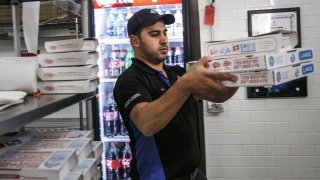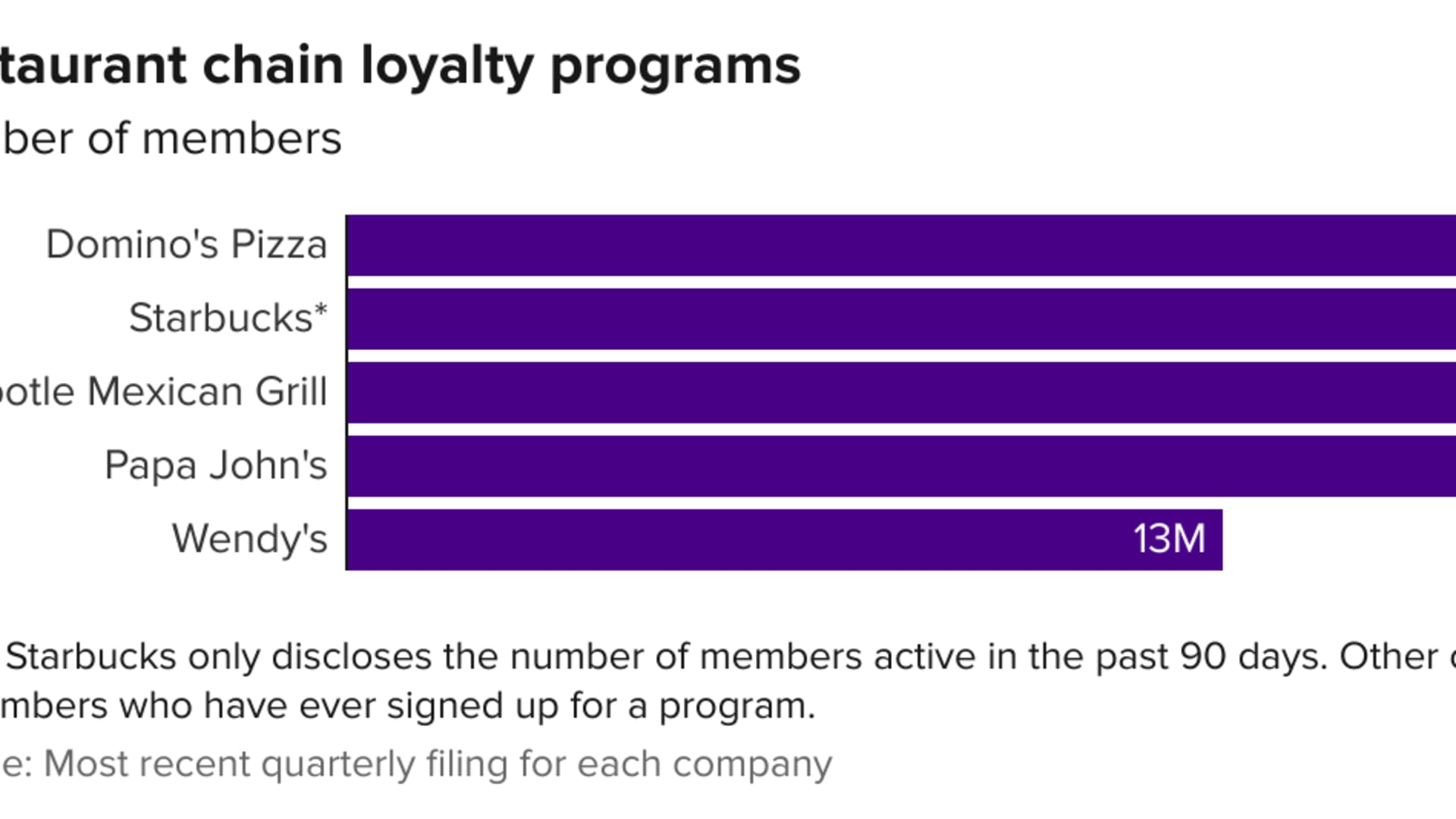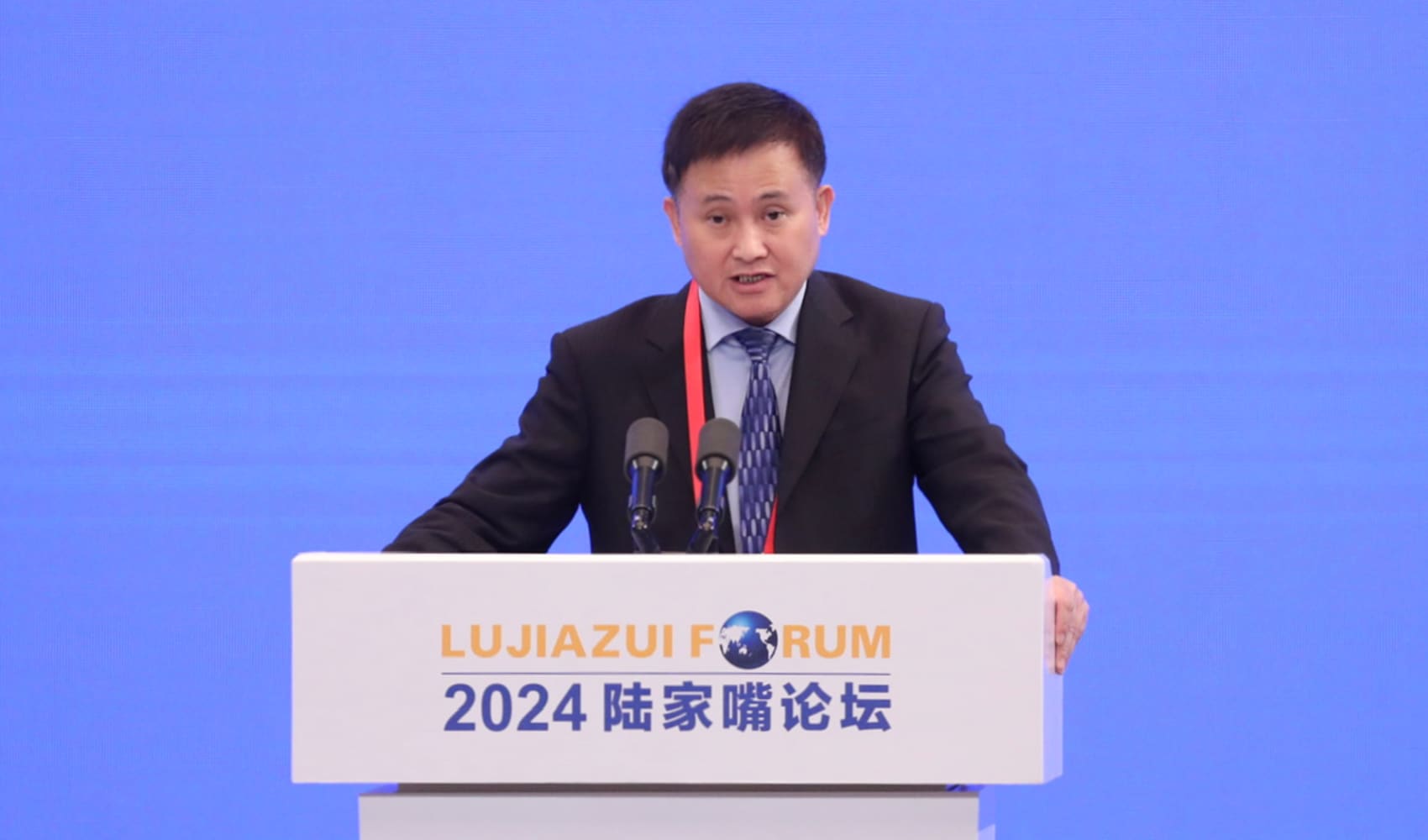
- McDonald's and Jack in the Box are among the restaurant chains with plans to launch loyalty programs this year to retain the digital customers they gained during the pandemic.
- Restaurant digital orders surged 124% in the year ended in March, according to the NPD Group.
- Consumer data from loyalty programs helps restaurants personalize the experience and target customers with tailored offers and discounts.
Forget the battle for chicken sandwich supremacy. The loyalty program wars are coming.
Restaurant digital orders surged 124% in the year ended in March, according to market researcher NPD Group. And the skyrocketing popularity of online ordering during the coronavirus pandemic is motivating big fast-food chains to use rewards programs to hold onto new mobile app customers. By now, most restaurant chains automatically sign customers up for loyalty programs once diners order via a mobile app.
Starbucks, Panera Bread and Domino's Pizza paved the way, while Chipotle Mexican Grill launched its own version in 2019. But the last year has brought even more players into the arena. Wendy's, Yum Brands' Taco Bell and Restaurant Brands International's Burger King are among the new entrants, and McDonald's and Jack in the Box are gearing up to launch loyalty programs later this year.
"With Covid-19 and consumers' shift in behavior, we've really seen a giant uptick in it, from the biggest brands that were kind of holding out, I'd say, are now launching programs to keep consumers returning and keep that loyalty," said Elle Kross, director of client strategy for travel, hospitality and food services at digital marketing firm Movable Ink.
Loyalty programs help fuel more frequent visits and higher average checks, according to Aaron Allen, founder of restaurant consulting firm Aaron Allen & Associates.
For example, Chipotle CEO Brian Niccol told analysts in April that the company's loyalty program has been driving additional transactions across its "light, medium and heavy consumer segments." Before the pandemic, the chain's program had 8.5 million members. Now, it has more than 21 million members.
Money Report
Digital orders made up the majority of the company's quarterly sales for first time ever during the first three months of this year. Chipotle has kept pushing consumers toward its loyalty program by giving them early releases on new menu items and keeping some items, like the quesadilla, available only by digital order.
However, those aren't the only factors driving the loyalty program boom among restaurants. Companies are also eager to learn more about customers — collecting and analyzing data based on their ordering preferences and personal information. This consumer data can be used to target customers better, both with marketing offers and for future opportunities, like new menu items.
"We've come a long way from the Subway punch card," Allen said.

For now, customers largely don't mind giving away this data about themselves in exchange for the occasional free drink or discount. Goldman Sachs surveyed 2,000 consumers about their opinions on tech features within the restaurant industry. Loyalty programs are rising in importance to these consumers, the survey found.
While restaurant loyalty programs differ in design and rewards, most programs don't use separate tiers based on how many points members have racked up, unlike airline rewards programs. For example, Starbucks dropped its tiers in 2019 in a bid to get new members more engaged with its loyalty program.
In the three quarters following Starbucks making that change, it added 3.1 million loyalty members, up 15% from the same time in 2019. And throughout that period, it reported strong quarterly U.S. same-store sales growth, excluding when the pandemic began to take a toll on the business.
During the crisis, the coffee giant made another major change to its loyalty program, expanding the number of payment options to include cash and PayPal. In Starbucks' fiscal second quarter of this year, 52% of sales at U.S. company-owned cafes came from Starbucks Rewards members. Mobile orders accounted for 26% of U.S. company-owned transactions, up from 18% a year earlier.
That's the kind of digital growth and loyalty that McDonald's is hoping to emulate with its upcoming rewards program. The chain's U.S. president, Joe Erlinger, told analysts in April that the company saw digital sales of almost $1.5 billion during its first quarter, including orders on its digital kiosks, mobile app and delivery platforms. But that number could be even higher. As of February, it's testing the program in 900 of its 14,000 U.S. locations, with restaurants in Arizona, Nevada and New England taking part.
Restaurants are also leaning on loyalty programs to help lend a more personal touch to interactions with customers, even as they zoom in and out of the drive-thru lane. Panera Bread's newest restaurant design will automatically recognize loyalty members, whether they go through the drive-thru or enter the location.
"Once you are identified, the vision is that we interact and acknowledge and treat you as a person, with preferences," Panera Chief Brand and Concept Officer Eduardo Luz said in a May interview. "It's what you expect when you go to a neighborhood cafe."
Luz said the company is considering several options to make this a reality, including scanning a code or microfencing technology. The first location with the new restaurant design is slated to open in November in Ballwin, Missouri.
One of the big questions for restaurants with existing loyalty programs is how to retain loyalty members even as competitors launch rival plans. Fast-food chains may have to ramp up the number or quality of rewards for members, betting that the boon of consumer data makes up for those losses.
"The breaking point or tipping point is that we don't want to download an app for every place that we visit," Allen said. "So we think that's another driver that's dividing the haves and have nots."
Large restaurant chains like McDonald's and Chipotle have the capital to invest in technology, like improving mobile apps and building frictionless rewards programs. But smaller chains and independent eateries won't be able to keep up in the same way. Instead, third-party companies could build loyalty programs for smaller players, but the companies using these plans won't receive the same customer data as a chain that built its own rewards program.
Competition is likely even among the big chains. Allen predicts that the restaurant giants will become more savvy and aggressive, employing strategies similar to those in the hospitality industry. Hilton Honors, for example, matches the rewards status for customers of rival hoteliers.
Kross pointed to Dunkin's year-in-review emails for loyalty members, similar to those created by Peloton and Spotify, as one example of a fast-food chain that's already getting creative. These kinds of summaries recap members' year, giving data on how many free drinks they earned at Dunkin' or the number of hours they worked out with Peloton.
"I think that's one that is really great because no two emails are going to be the same, because no two consumers are going to be the same," she said.






